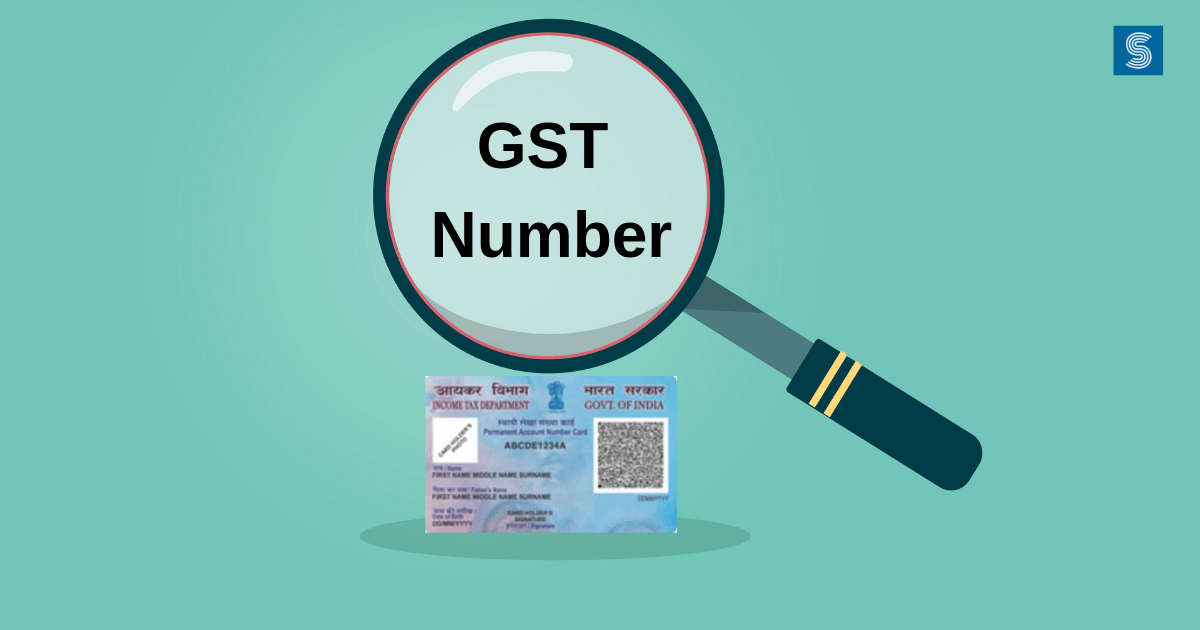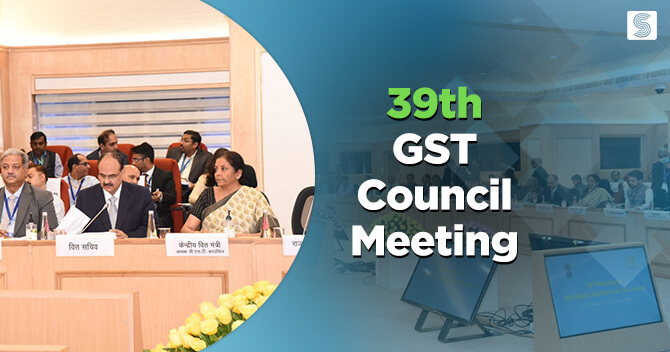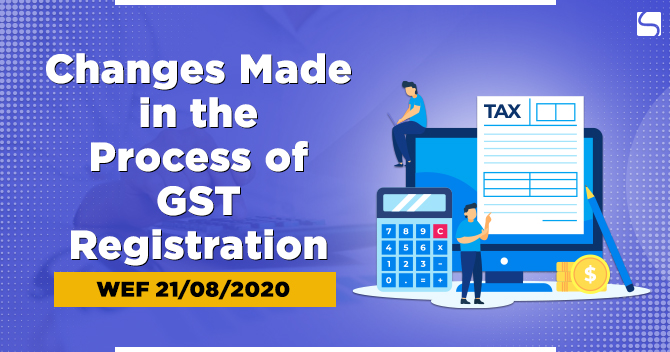Goods and Service Tax: A Guide on this Indirect Tax Regime
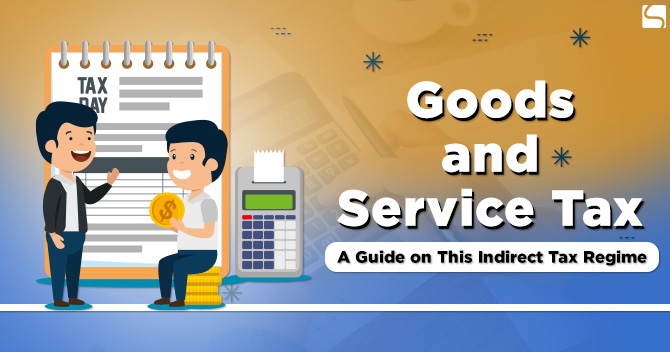
Shivani Jain | Updated: Jul 28, 2020 | Category: GST
GST or Goods and Service Tax is a Destination based Tax levied on the consumption of goods and services. It is a comprehensive and multi-stage tax that is charged on every Value Addition. Further, this Indirect Tax Regime has replaced several other indirect taxes, such as VAT (Value Added Tax), Service Tax, Central Sales Tax, Excise Duty, etc.
In this blog, we will discuss every facet of the Goods and Service Tax in India.
Table of Contents
Concept of Goods and Service Tax
In India, the concept of GST was enforced by the Central Government on 01.07.2017. It is an indirect tax that is levied on the supply of Goods and Services. The main reason behind the implementation of GST was to streamline the tax regime in India.
Further, there are 5 tax slabs prescribed under this structure. Those are 0%, 5%, 12%, 18%, and 28%. Also, three components of this structure are as follows:
- CGST (Central Goods and Service Tax);
- SGST (State Goods and Service Tax);
- IGST (Integrated Goods and Service Tax).
CGST and SGST will be charged with those goods or services that are supplied or rendered within a state, i.e., Intra-state. In contrast, IGST will be levied on the Inter-state supply of goods and services.
Further, the GST Council acts as the regulatory force for the Goods and Service Tax. That means all the rules and regulations concerning Goods and Service Tax are implemented and governed by the GST Council.
Moreover, every registered taxpayer after obtaining GST Registration will be provided with a unique 15-digit identification number known as GSTIN (Goods and Service Tax Identification Number) by the authorities. Every taxpayer needs a GSTIN number for filing GST Returns on the GST Portal.
Benefits of GST in India
In India, the benefits of GST are as follows:
- Manufacturers and Traders:
- Easy Compliance;
- Improve Competitiveness;
- Removes Cascading Effect;
- Uniformity in Tax Rates and Structures;
- Development of a National Market;
- Central and State Government:
- Simple and Straightforward Administration;
- Improved Compliance;
- Increased Revenue Collections;
- Better Revenue Effectiveness;
- Consumers:
- Single and Transparent Tax Payment;
- Reduction of Tax Burden;
Changes brought by GST Law
In India, one of the significant changes bought by GST was the introduction of the principle of “One Nation One Tax”. Some of the changes bought by this tax structure are as follows:
- No Payment of Multiple Taxes;
- Replacement of Excise Duty and Sales Tax;
- Clear Difference between Tax on Necessities and Luxuries;
- Facilities to File ITR (Income Tax Return) through GST Portal;
- Boost in MSME and Real Estate Sector;
- Ease in Transportation of Goods;
- Administration by Both State and Central Government;
- Transparent Taxation Procedure.
Components of GST
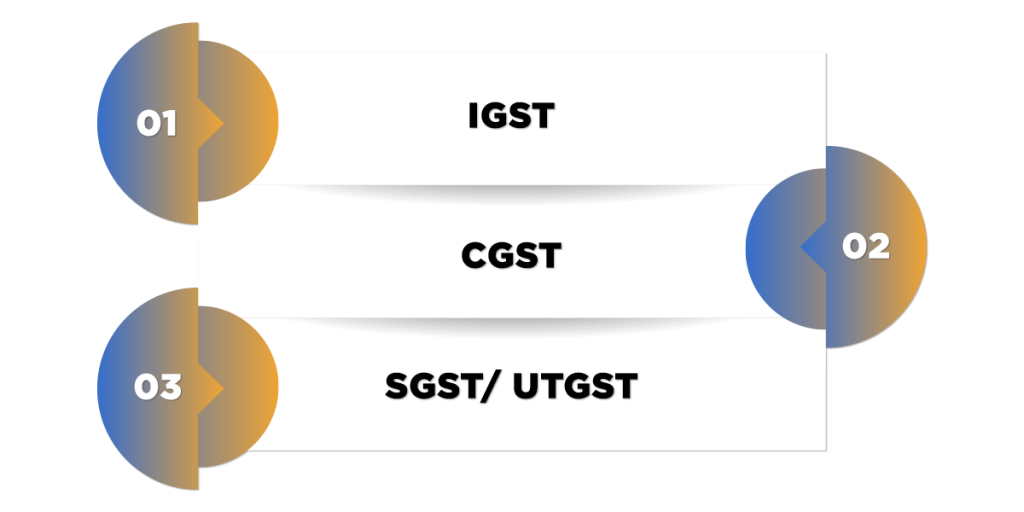
In India, there are three components of Goods and Service Tax, i.e., CGST, SGST, and IGST. The basic difference between the components of GST is as follows:
| Basis of Difference | IGST | CGST | SGST/ UTGST |
| Who will Levy Taxes? | Central Government will levy IGST on Inter-state supplies of goods and services. | Central Government will levy CGST on Intra-state supplies of goods and services. | State or Union Territory Government will levy SGST or UTGST on Intra-state supplies of goods and services. |
| Taxes that will be Replaced? | CST (Central Sales Tax) | Excise Duty, Service Tax, CVD (Countervailing Duty), SAD (Special Additional Duty), ADE (Additional Duties of Excise), etc. | VAT (Value Added Tax), Luxury Tax, Sales Tax, Entry Tax, Purchase Tax, Entertainment Tax, Octroi Duty, Taxes on Lottery, etc. |
| Applicability | Inter-State Supplies and Import of Goods and Service. | Intra-State supplies of Goods and Services | Intra-State supplies of Goods and Services |
| Input Tax Credit (ITC) | Against CGST, SGST, and IGST | Against CGST and IGST | Against SGST/UTGST and IGST |
| Sharing of Tax Revenue | Shared between the State and Central Government | Central Government | State/ Union Territory Government |
| Free Supplies | Applicable on Free Supplies | Applicable on Free Supplies | Applicable on Free Supplies |
GST Tax Slabs
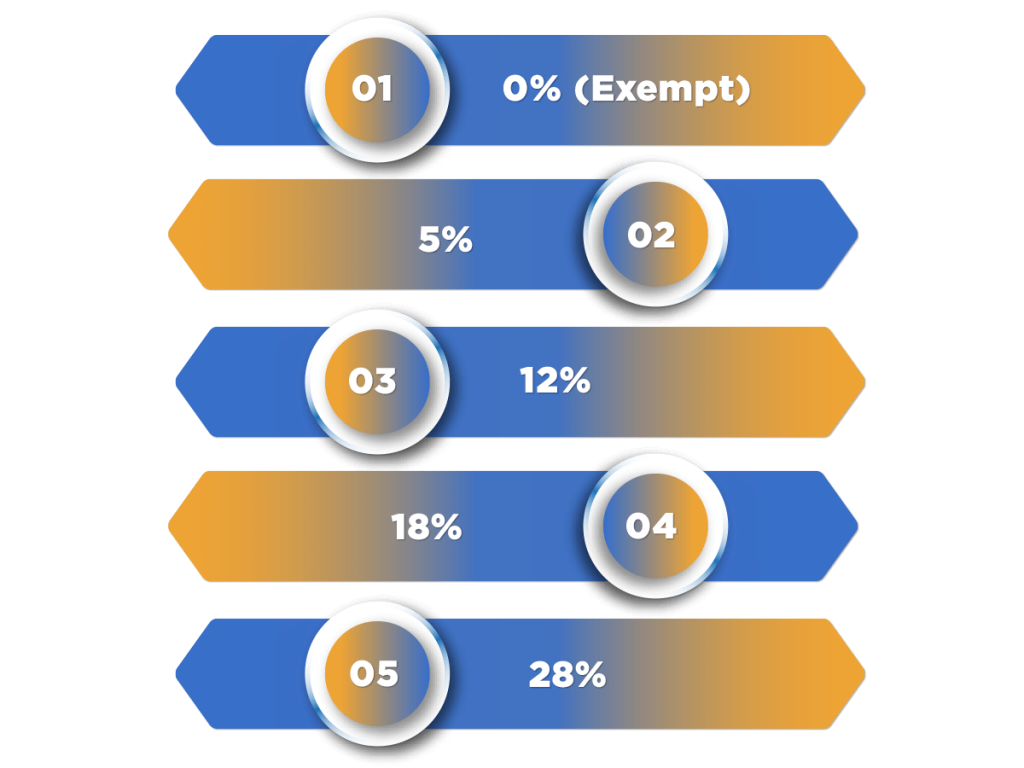
In India, there are 5 Tax Slabs prescribed under GST Law. Those are 0%, 5%, 12%, 18%, and 28%. A summarized bifurcation between all the tax slabs is given below:
| Slab Rates | Popular Goods | Popular Services |
| 0% (Exempt) | Bread, Salt, Rakhi without Precious Metal, Sanitary Napkins, Eggs, Sindoor, Bangles, Newspapers, Handlooms, etc. | Hotels or Lodges with a Charge up to Rs 1000, bank charges of saving account, etc |
| 5% | Fertilizers, Frozen vegetables, Spices, Plastic waste | Takeaway Food, Newspaper printing, Restaurants |
| 12% | Ghee, Nuts, Handbags, Fruits, Purses, Pouches, etc. | Building Construction for Sale, Temporary basis IP rights |
| 18% | Camera, Washing Machine, Shampoo, etc. | IT services, Outdoor Catering, Telecom Services, etc. |
| 28% | Pan Masala, Sunscreen, Motorcycles, etc. | Food/Drinks/Stay at AC Five Star Hotels, Cinemas, etc. |
Eligibility Criteria for GST Online Registration
The Individuals or Business eligible to obtain GST Online Registration are as follows:
- Individuals or Businesses registered under VAT, Excise, and Service Tax;
- Businesses having an Annual Turnover of more than Rs 40 lakhs;
- Businesses having an Annual Turnover up to Rs 10 Lakhs in special states. The Special States denote Uttarakhand, Jammu and Kashmir, Himachal Pradesh, and the North-Eastern States;
- Casual Taxable Person;
- NRI (Non-Resident of India) person;
- Agents of ISD (Input Service Distributor) and Suppliers;
- One who is paying tax under the Reverse Charge Mechanism;
- Individuals who supply through E-commerce Aggregator;
- E-commerce Aggregator;
- Individual dealing in Online Information and Database Access, or Retrieval Services from any place outside India.
Types of Taxpayers under GST Law in India
There are 4 main types of taxpayers under GST Law, which are as follows:
- Normal Taxpayer;
- Casual Taxpayer;
- Composition Taxpayer;
- Non-Resident Taxpayer;
Documents Required for GST Registration
The Documents Needed to obtain GST Registration are as follows:
- PAN Card details of the applicant;
- Aadhar Card details of the applicant;
- Certificate of Incorporation (COI);
- Identity Proof of the Directors and Promoters;
- Photographs of the Directors and Promoters;
- Address Proof of the Directors and Promoters;
- Address Proof of the Registered Office;
- Cancelled Cheque or Bank Account Details;
- Digital Signature Certificate (DSC);
- Board Resolution/ Letter of Authorisation from Authorised Signatory.
Process for Obtaining GST Registration Online
The steps involved in the procedure to obtain GST Registration Online are as follows:
- First, Visit the official GST Portal.
- Now, select the “Register Now” link on the “Taxpayers” Tab;
- Choose the option “New Registration”;
- After that, fill in the details, such as:
- Select “Taxpayer” from the drop-down menu saying “I am a”;
- Choose the State and District;
- Enter Business Name;
- Enter PAN Card Details;
- Fill in Email ID and Mobile Number;
- Lastly, click on “Proceed”
- Now, on the next page, enter the received One Time Password and click on “Proceed|”;
- The applicant will be given a TRN (Temporary Reference Number) on the screen, which he/she needs to note down for future reference;
- Now, again visit the GST Portal and choose “Register” under the “Taxpayers” tab;
- Choose the option “Temporary Reference Number” and enter TRN and Captcha provided;
- Click on “Proceed”;
- The applicant will again receive an OTP on the registered mobile number and email ID;
- Again, click on “Proceed”;
- One can see the status on the Next Page;
- Now, click on the “EDIT Icon”;
- The applicant needs to fill in all the information and details asked. He/she also need to submit the required documents;
- The documents required are as follows:
- Photographs;
- Address Proof of the Registered Business;
- Bank Account Details, such as Bank Name, Account Number, IFSC Code, and Branch Name;
- Authorization Form;
- Constitution of Taxpayer
- Now, visit on the “Verification” page and check the declaration;
- The applicant can submit the form by either of the following:
- Through EVC (Electronic Verification Code), in this a code will be sent to the Mobile Number;
- Through E-sign, in this an OTP will be sent on the mobile number linked with Aadhar Card;
- In the case of a company, details of DSC (Digital Signature Certificate) must be given;
- After successful completion of the form, an ARN (Application Reference Number) will be sent on the registered email id and mobile number;
- One can check the status of application form through ARN provided.
Penal Provision for Non-Registration
In case the taxpayer has paid no or less tax than the amount due, then he/she will be charged a penalty of 10%of the amount due. Also, the minimum penalty prescribed is Rs 10000.
However, if the taxpayer is not having GST Registration and is trying to evade taxes, then he/she will be liable to pay 100% of the amount due as tax.
Latest Updates on Goods and Service Tax Registration
As per the latest notification issued by the CBIC (Central Board of Indirect Taxes)[1] dated 27.06.2020, the time limit for completion of specific compliance has been extended further to 31.08.2020. Further, the time limit is for the period between 20.03.2020 to 30.08.2020.
However, this limit does not include the person who needs to acquire GST Registration under 25 and 27 of the CGST Act. Section 25 deals with the Normal Registration and section 27 deals with the GST Registration for NRI and Casual Taxable Person.
Concept of GST Registration Certificate
Any business or trade whose annual turnover is above Rs 40 Lakhs and Rs 20 Lakhs (special states) needs to obtain registration under the Goods and Service Tax. Further, the regulatory authority issues the GST Registration Certificate to every registered taxpayer in the form GST REG- 06.
Moreover, a registered taxpayer is eligible to download the Registration Certificate from the official GST Portal. It is noteworthy to state that only the GST Portal has the facility to allow downloading of the GST Certificate. It also means that the government does not issue any physical GST Registration Certificate.
Process to Download GST Certificate
The steps involved in the Process to download a GST Registration Certificate are as follows:
- Visit the GST Portal on https://www.gst.gov.in/;
- No, go to the “Services” tab and select “User Services”;
- After that, click on the option saying “View/ Download Certificate”;
- Now select the “Download” icon.
A GST Registration Certificate contains all the details and information relating to Business. The first page of the certificate provides basic details, such as Name, Address, and Registration Date of the business.
The Second Page of the Certificate is known as “Annexure A”. This page contains additional information regarding the business.
Lastly, the Third Page, which is known as “Annexure B”, provides details about the person in charge of the business.
Conclusion
After discussing thoroughly, it is crystal clear that obtaining GST Registration is a must for every supplier or business whose annual turnover exceeds the threshold of Rs 20 lakhs and Rs 40 lakhs. Further, in this learning blog, we have tried our best to simplify the procedure for GST registration.
However, if one still has any doubts or facing any dilemma regarding the process or anything, he/she can contact our experts at Swarit Advisors. Our experts can assist you in the process of GST Registration, GST Migration, or GST Return Filing.
Also, Read: Composition Scheme under GST Act: A Guide on its Key Reforms












